A common mistake many companies make is treating employee onboarding as a one-time event that involves little more than greeting new hires and showing them the way to their workspace.
Quite to the contrary, an effective onboarding process is a blend of smaller aspects that cover equipment, knowledge, culture, expectation management, and so much more.
For your convenience, we’ve broken down onboarding into seven different segments that work together to create the ideal process at your company.
Read on and find out how each type of onboarding contributes to integrating your new employees into your workforce seamlessly.
Operational Onboarding
Operational onboarding basically means taking action to ensure that your new hire has everything they need to do their work.
This includes aspects like procuring the equipment and tools the employee will be working with, as well as securing login information for email and the software they will be using.
Anything the employee will need on the first day should be waiting for them the first time they walk into the office.
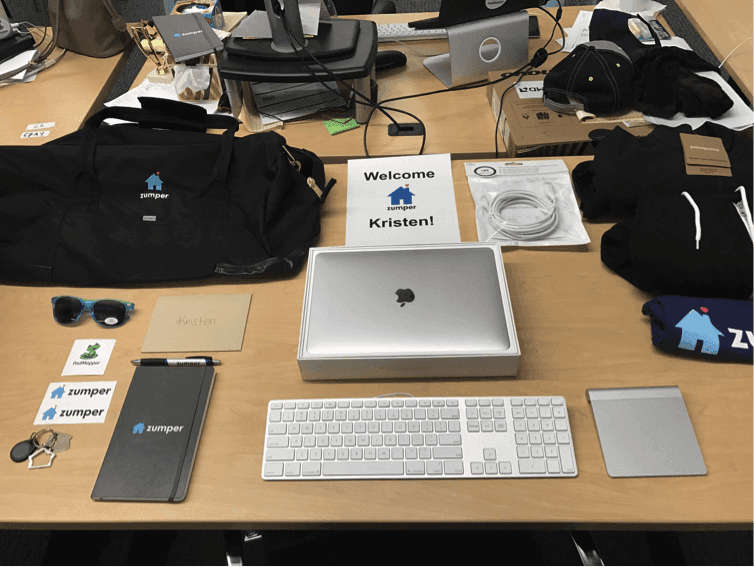
Source: Sapling
This is a very important step because it establishes the first impression with your new employee that you’re not going to be able to change afterward.
Think about it: if your employee comes into the office on their first day and their laptop or email isn’t ready, they might think that your company isn’t as impressive as they thought when they applied for the job.
Read recommendation: How to Write a Great Welcome to The Team Email
Furthermore, if they don’t have the equipment they need to work, they’ll feel like their time is being wasted and they’ll have nothing to do for the rest of the day, which may cause some embarrassment on both sides.
If this problem persists on a systemic level, you could be facing an increased turnover rate—and allowing it to persist is one of the most expensive mistakes a company can make.
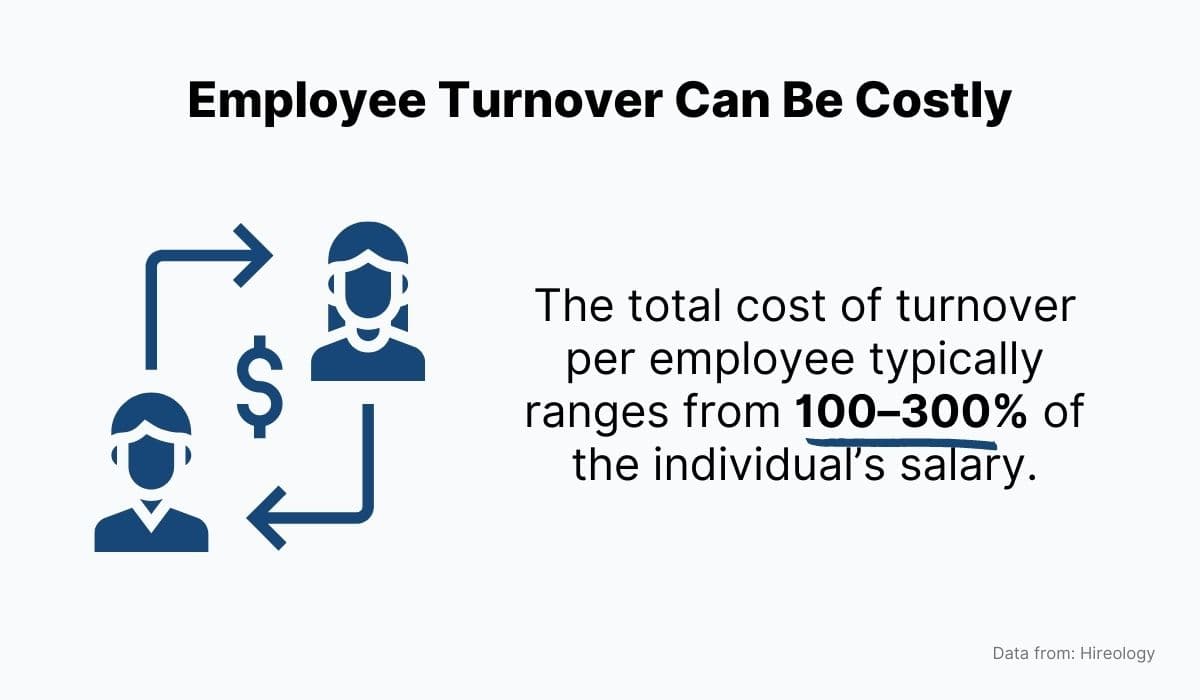
Source: Archbee.com
Therefore, it’s certainly worth your time to nail this part of onboarding. The best practice is to start preparing as soon as the job offer is accepted and to systemize the process.
For example, you can create a checklist of items, tasks, and activities that need to be completed before the employee’s first day.
The checklist can be used for every new employee, so you can save it as a part of your company’s documentation base.
Our documentation software, Archbee, can help you create checklists for employee onboarding in a blink of an eye.
That way, you’ll always have it ready when you hire a new member of staff.
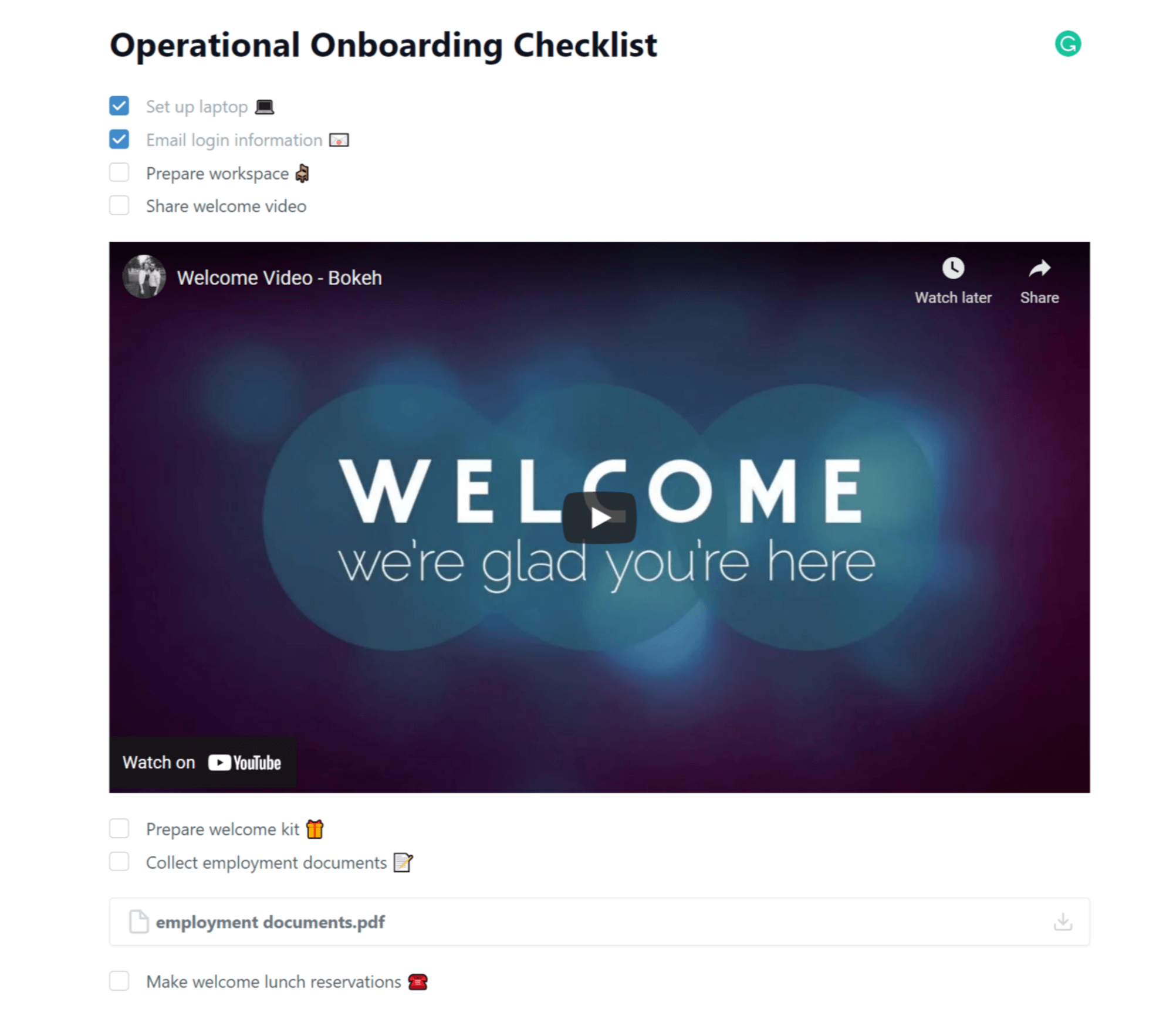
Source: Archbee.com
The best part is that you can make it interactive and embed all kinds of resources, such as images and video.
Once you nail the operational onboarding, the fun part can start—knowledge onboarding!
Knowledge Onboarding
Transferring knowledge, good practices, and specific procedures to new employees is an essential type of onboarding.
Your new employee needs to learn the particulars of their role so that they can begin contributing to company goals as soon as possible.
After all, the purpose of your onboarding process is to create independent, high-achieving members of your team.
Obviously, transferring knowledge isn’t a one-time event, but rather a process that takes some time. This is actually the part of onboarding that many companies get wrong.
They require new employees to absorb a large amount of information in a very short time, which causes new hires to feel overwhelmed and ill-prepared for their job.
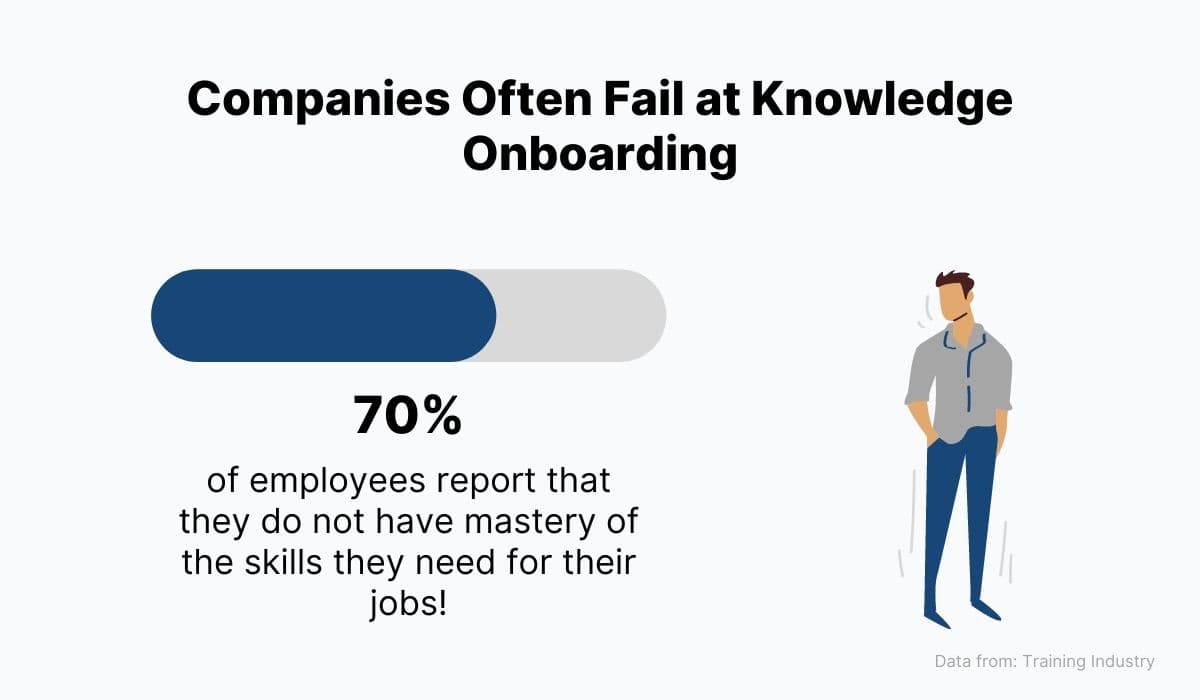
Source: Archbee.com
In the worst-case scenario, this can lead to mistakes and delays in the workflow, which can cause you to lose revenue as well as clients.
To avoid this, make sure your new employees get proper training and enough face-to-face interaction with their managers and supervisors, who are tasked with showing new employees how things are done at your company.
You can do that by offering courses where new hires can learn your work processes and become acquainted with their new role.
A company that does this very well is Quora.
Their new employees participate in a series of ten onboarding talks where they are immersed in company workflows, procedures, and culture.

Source: Twitter
The talks take place over the first couple of weeks and are given by experienced members of staff.
The goal of those talks is to give new employees the tools they need to succeed at the company and give them a chance to interact with each other, as well as the management staff of the company.
Sharing knowledge in person is vital, but employees also need knowledge resources they can consult whenever they need to, independently.
That’s why many companies employ knowledge bases and wikis as a part of their knowledge management strategy.
New hires are given access to vast online libraries of company documents, policies, and procedures so that they can learn at their own pace and look up important information at times when their supervisors are not available.
If this sounds like a good idea, you can start building your company’s own knowledge library right away.
The easiest way to do it is by using modern documentation software, like Archbee, which enables you to create or upload documents easily and make them available online with no coding necessary.
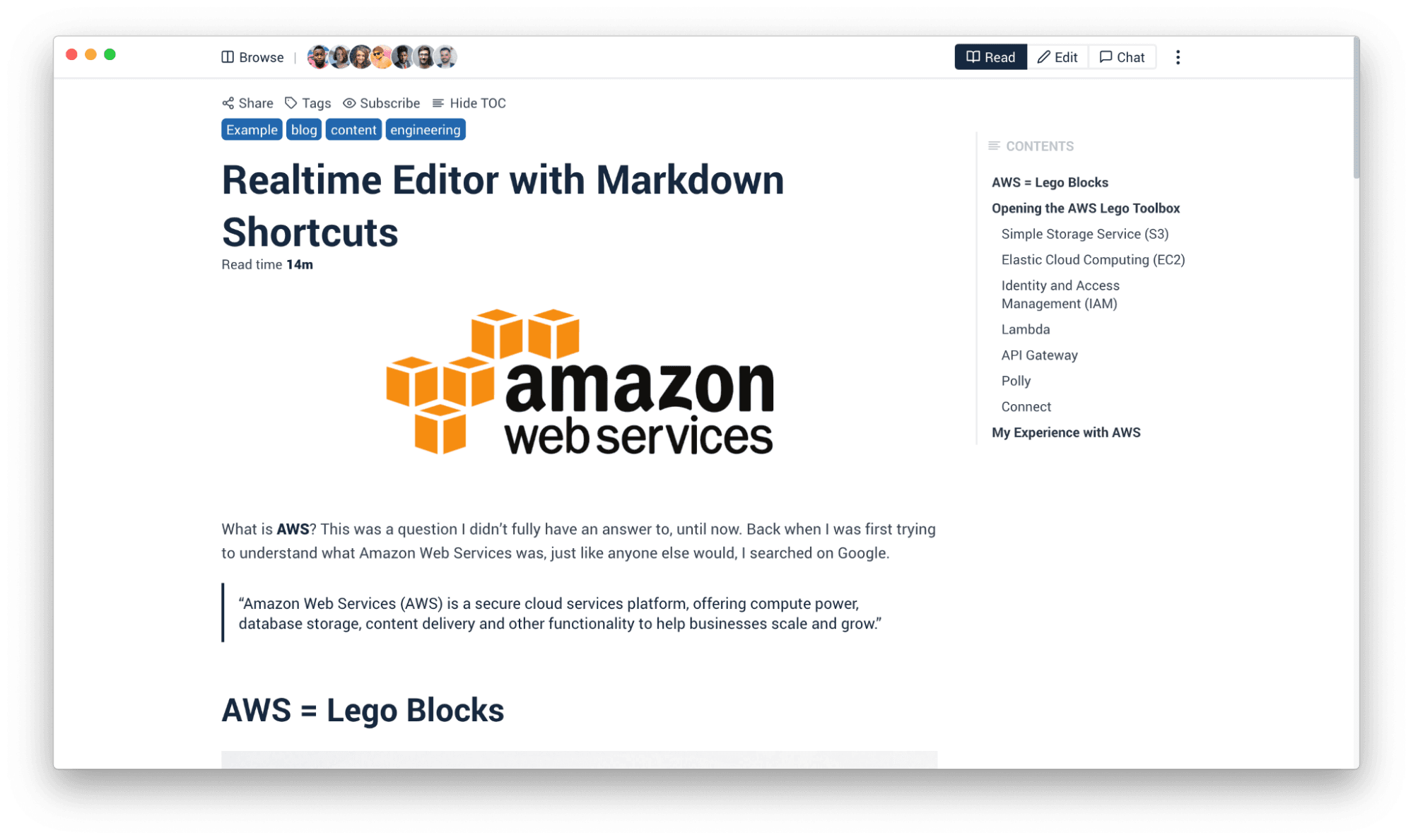
Source: Archbee.com
By combining in-person training and on-demand access to knowledge, you’re covering all your bases and ensuring your knowledge onboarding is as effective as possible.
Read recommendation: 15 Inspirational Welcome Messages for Your New Employees
Performance Onboarding
Unfortunately, most companies consider onboarding to be completed once they’ve covered the aspects we discussed in the first two sections of this article.
They provide the equipment and tools for the job and show their new hires how things are done in their new company, after which employees are pretty much left to their own devices.
It’s, therefore, no surprise that employees overwhelmingly agree that the onboarding processes in their companies are insufficient to prepare them for the challenges of their new job.
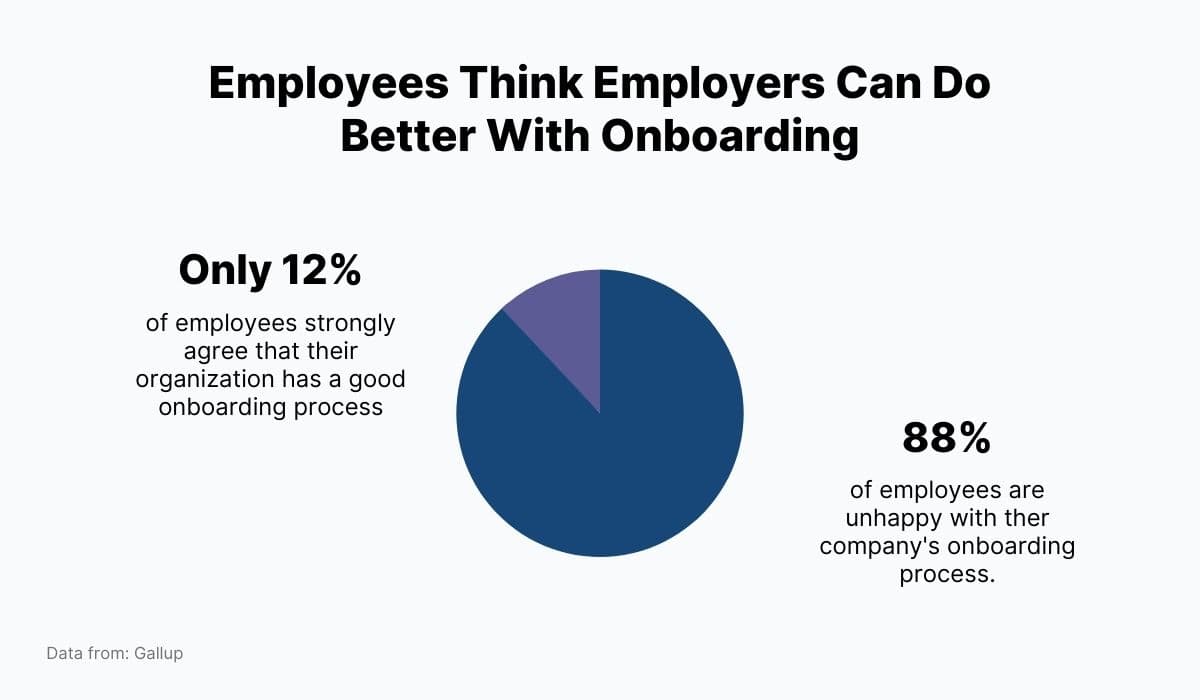
Source: Archbee.com
An essential part of onboarding that employers sometimes miss is performance onboarding.
Performance onboarding entails communicating clear expectations, milestones, and KPIs the employee’s work can be measured against.
Including these kinds of goals in the onboarding process might seem logical to you; however, more than half of the employers out there don’t define them.
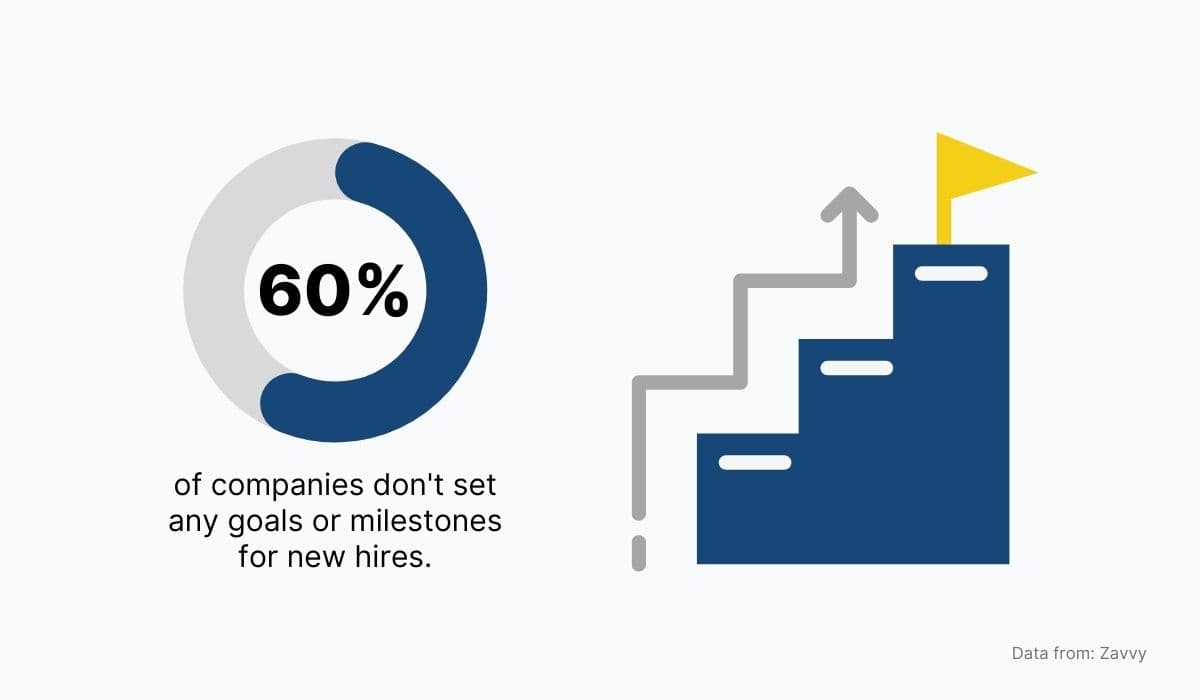
Source: Archbee.com
Keep in mind that the new hires don’t automatically know what is expected of them and what their supervisors and managers will count as success.
A good practice to follow here is to sit down with your new hire as soon as they start their job to communicate clear goals and expectations.
Remember that goal-setting has to be a conversation. In other words, you need to discuss them and settle on goals the employee feels confident they can achieve.
Along with the goals, it’s also important to communicate your expectations and to express them in understandable, clear terms because the employee can only meet expectations if they understand them completely.
This is important because unclear expectations can be a great source of stress and anxiety within your team.
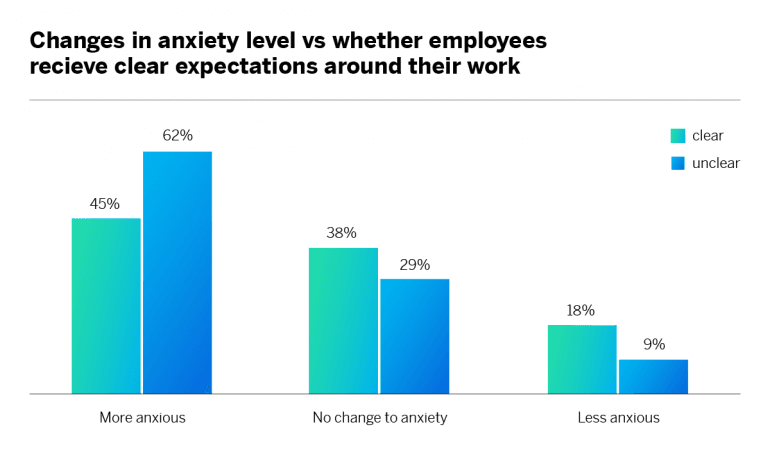
Source: Qualtrics
As for success, try to establish clear measurements for success so that both you and your employee are on the same page on how tasks should be completed.
For example, if you manage a sales team, you could set the KPI as a certain number of sales closed using your approved sales script.
Last but not least, don’t forget to celebrate your employees’ success as that will keep them motivated and engaged throughout the onboarding process.
When the new employee hits a certain milestone, it’s always a great idea to let them know you’re impressed with their progress by praising them in front of the team or giving them a reward, such as a salary bonus.
Performance onboarding is all about expectations, goals, milestones, and achievements.
So keep those concepts in mind at all times and communicate their meaning to your new employee.
Social Onboarding
Integrating your new hire into the team and helping them participate in company culture is just as important as other aspects of onboarding.
In fact, many famous companies out there put emphasis on this very aspect of onboarding because they prioritize teamwork and collaboration above everything else.
This actually makes a lot of sense because the better you manage to integrate the new employee into your team, the more comfortable they will be coming into work every day.
And that means they are far less likely to leave your company.
Furthermore, employees that work as a part of an aligned, tight-knit team perform better than they would on their own, or as a part of a team where interpersonal relationships aren’t as good.
This is a fact almost everyone agrees on.
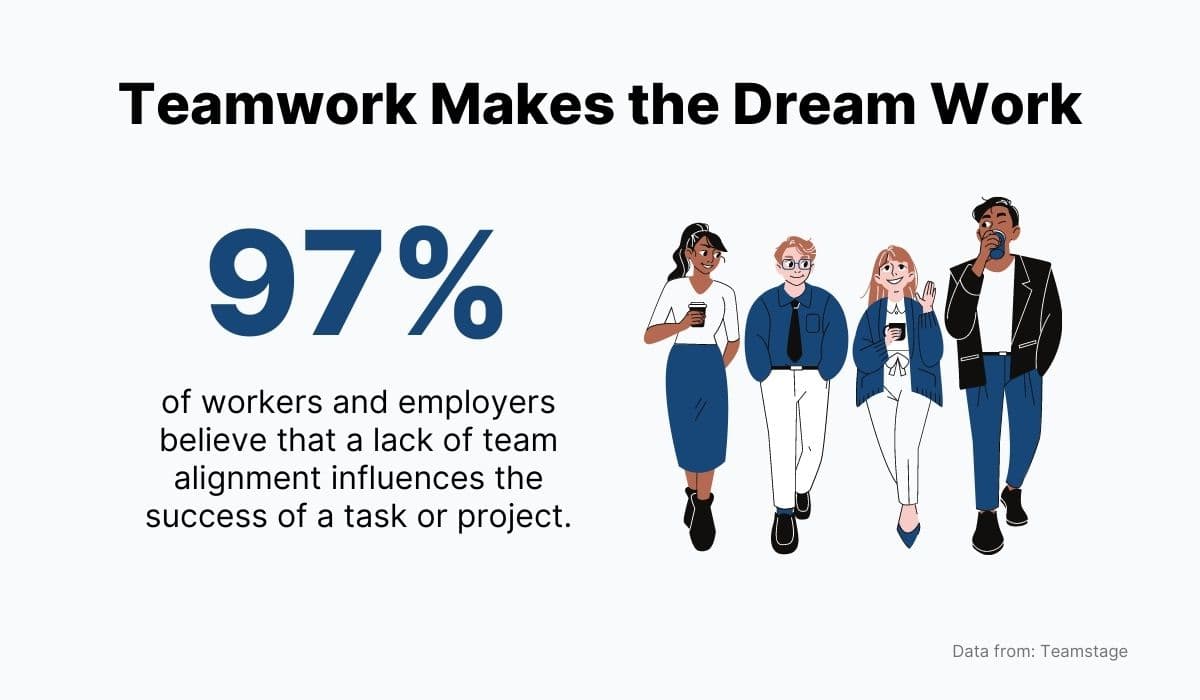
Source: Archbee.com
The secret to excellent social onboarding is creating opportunities for employees to interact, form relationships, and collaborate.
There are many ways to do that, so feel free to come up with some ideas that will reflect your own company values and give your employees a chance to express their unique personalities and showcase their skills.
For example, Square, the financial services company, has two very effective strategies for social onboarding.
The first is a fun culture of coffee, and the other is an insistence on providing opportunities for employees to interact with the company executives.
Every new employee at the company is included in a series of talks and roundtable discussions with the existing employees, as well as invited for coffee with senior executives at local coffee shops during their first week.
And, of course, every new hire is fitted with company swag, including branded shirts, so that they can feel like a part of the team from day one.

Source: LinkedIn
It’s a fact of life that people are social beings, and this holds especially true in our professional lives.
Nurturing a work culture and building strong relationships is one of the most effective ways of boosting performance and keeping employees happy in the long run.
That’s why it’s important to successfully integrate new employees into your team from day one with a smart social onboarding strategy.
Talent Onboarding
As you already know, people are your company’s greatest asset.
What they bring to work every day is a unique and invaluable combination of talents, skills, and experience.
These, when nurtured and utilized in the right way, help your company rise up to any challenge and remove any obstacle standing in the way of your company goals.
That’s why it’s incredibly important to be conscious of the talent that resides in your office and take steps to develop your employees’ skills so they can become experts in their own fields.
Not only will this propel the implementation of your company’s mission forward, but it will also provide another reason for your employees to stay with your company for years to come.
That’s because companies with strong learning and development programs usually enjoy higher retention rates.
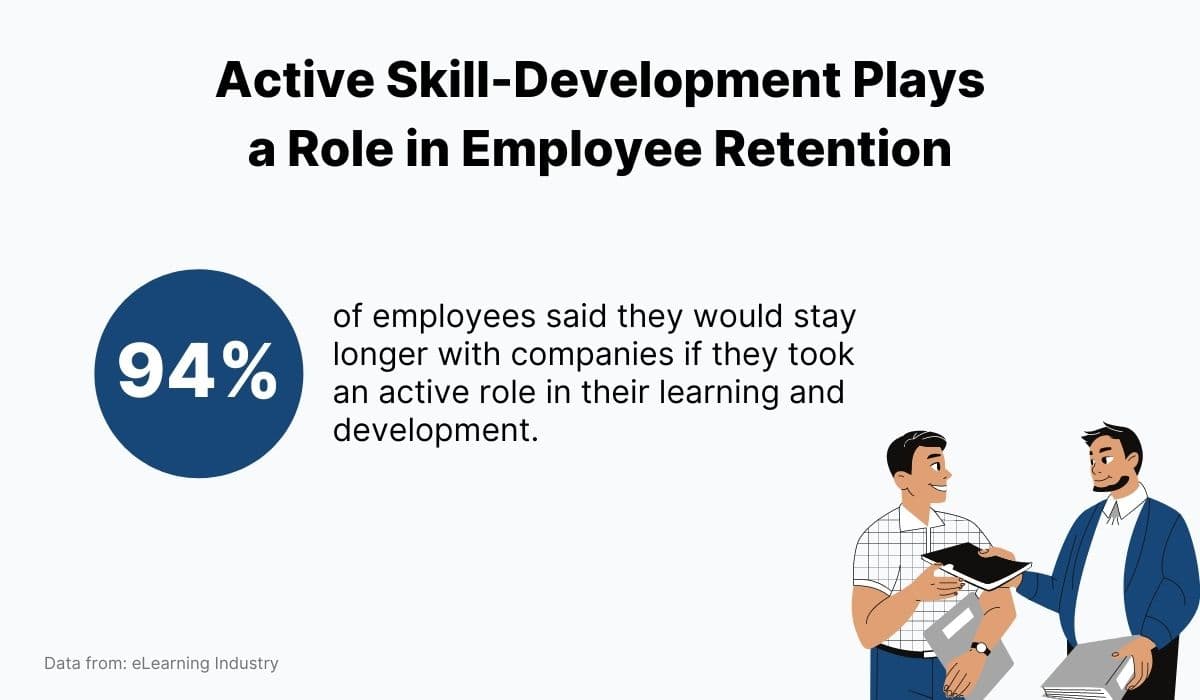
Source: Archbee.com
Having a strong talent development strategy should start during the employee onboarding process.
The first step is to put talent-identifying practices in place. This is where your managers come into play.
During the first months of your employee’s time with your company, their manager should keep a close eye on the new employee and identify tasks and types of work the employee excels at.
Do they have a keen eye for detail or an analytical mind? Or do they have an extraordinary ability to resolve conflict or exhibit leadership characteristics?
These are pieces of information that will help you put your new hire on the path toward success because they will allow you to place them into roles and assign them to projects that best suit their skillset.

Source: Archbee.com
You can also have your employees complete surveys or engage them in interviews so that they can self-estimate their capabilities and tell you about unique skills you haven’t seen in action yet.
For example, this way you can find out a new employee is fluent in Mandarin, which is a great asset to have if you’re just starting work on an important project with a partner from China!
Once you’ve collected the data on your team’s talents, you have a much better idea of what you’re working with.
You’ll be better at creating opportunities for your team to develop their skills, which helps them contribute more to your company as well as become the best versions of themselves.
Strategic Process Onboarding
Up to this point, we’ve mostly discussed aspects of onboarding that concern all new employees.
Building on that, it’s important to acknowledge that, from time to time, you will also need to onboard higher-level managers, senior staff, and executives.
This is where things get a little tricky.
Managers and leaders should reflect company culture through their behavior and actions and should also have the deepest understanding of the company mission so that they can direct the team’s work toward achieving it.
That means that your onboarding process for new managers and executives should put emphasis on learning everything there is to know about the strategy for accomplishing the company’s goals and furthering the company mission.
Strategic process onboarding is essential because only a strategy-conscious team leader will be able to lead their team towards success.
With good strategic process onboarding, your new managers are able to explain how each role and each task contributes to achieving common goals.
This means they have a much better chance of keeping their teams productive, motivated, and engaged.
In fact, this is exactly the reason why managers are the ones who are responsible for their team’s engagement levels.
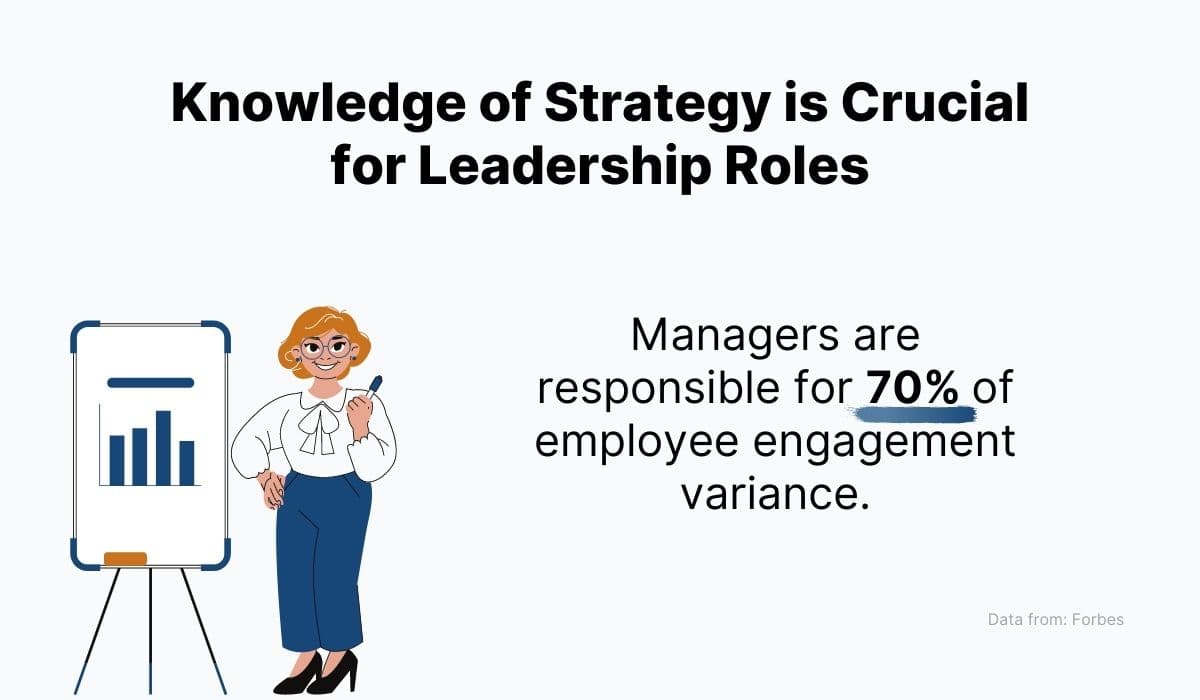
Source: Archbee.com
This aspect of onboarding is at its most effective when it’s carried out by c-executive staff at your company.
After all, these are the individuals who shaped your company’s mission, as well as the strategy for achieving it.
Who better to brief new managers on these important concepts than the very people who have already internalized them?
Therefore, as you’re onboarding your new managers, be sure to include enough facetime with the CEO and other senior executives at the company.
Organize formal meetings so knowledge can be transferred, but take care to also bring these members of the company together at less formal events, such as lunches or the company picnic.

Source: Instagram
Remember, the company founder or CEO is the architect of your company’s strategy for achieving success.
In that sense, they are the most qualified person to carry out this aspect of onboarding.
Leverage these individuals in your strategic process onboarding to ensure the message remains crystal clear and undiluted.
Organizational Process Onboarding
This is the part of the onboarding process that informs new hires about how your company is organized, and what values and principles are considered important.
When you are onboarding new leaders, they need to learn how they are expected to behave in any given situation.
Successful companies are built on basic principles that aren’t necessarily universal, and goals are achieved by following methods that your company has developed over time.
It wouldn’t be realistic to expect your new hires to know and understand the unique ways your company operates automatically.
Rather, this information and knowledge need to be adequately transferred.
Here are some examples of organizational aspects your new hires (especially managers and team leaders) need to be acquainted with:
- Company policy
- Rules of conduct
- Discipline procedures for undesirable behavior
- Rules for recognizing and rewarding outstanding achievements by team members
- Hiring strategies
- The structure of the team budget
Since these rules and regulations are formal documents your managers will need to consult again and again, the best practice is to collect these important records in a single place that’s easily accessible at all times.
Using documentation software, such as Archbee, your managers can always look up official company regulations and find the information they need in just a couple of clicks.
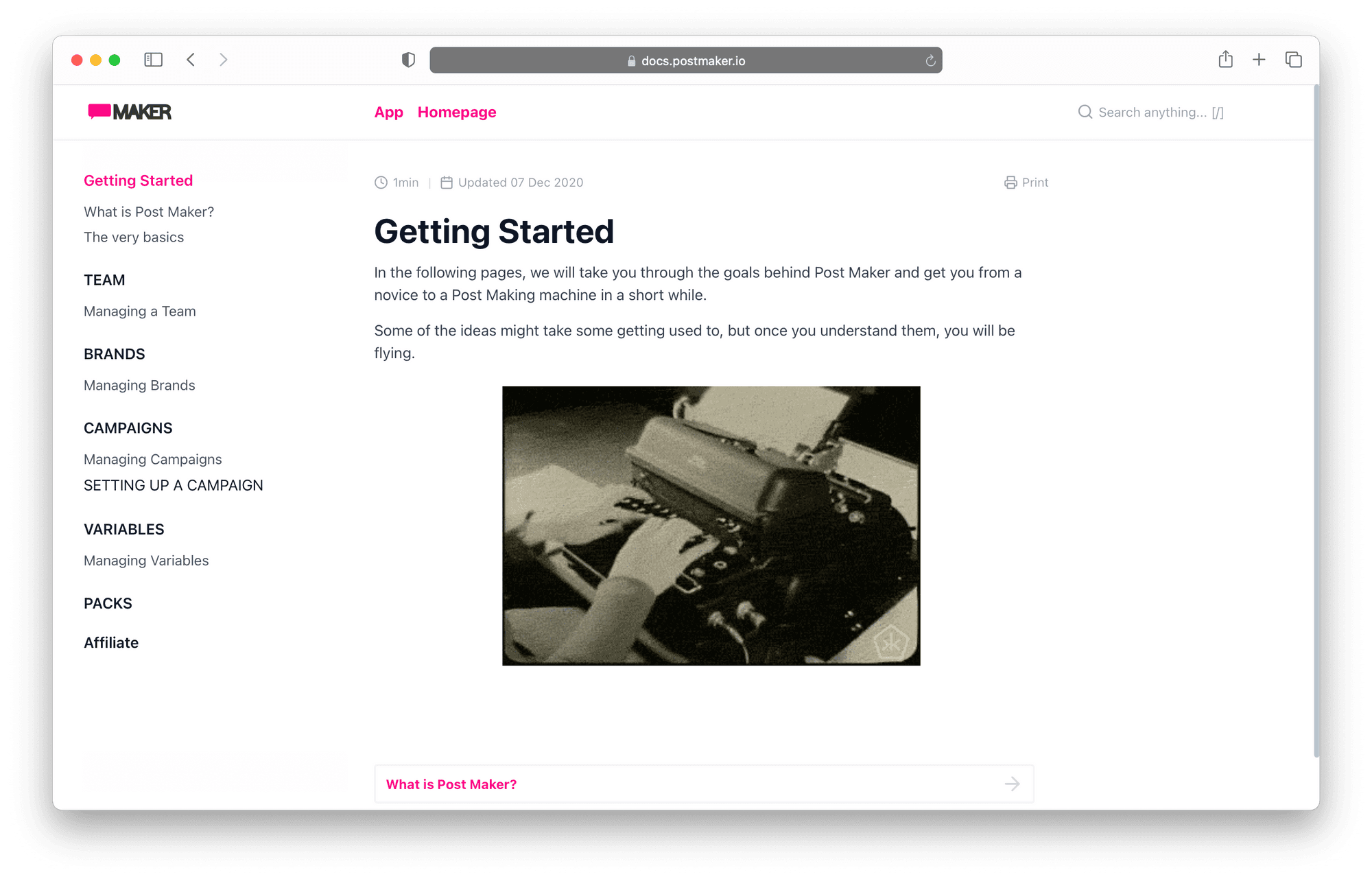
Source: Archbee.com
Apart from rules and regulations, managers who are not promoted from within the company will also need to get up to speed on the team members they’re going to be leading.
So take some time to describe the structure of the team, explain who’s responsible for various aspects of your project, and brief them on the relationships, conflicts, and other specifics within the group.
Last but not least, don’t forget to introduce the new manager to other team leaders and encourage interdepartmental collaboration.
Work projects are rarely carried out by just one department or team, so it’s definitely worth your while to nurture good relationships between various teams, and not just within one team.
Remember, the bigger your company, the more complex the structures within it, and the more emphasis you’ll need to put on organizational process onboarding.
So give this aspect of the manager onboarding process your full attention from day one.
More Than One Type of Employee Onboarding
We hope that this article has shown you that employee onboarding is a multi-faceted process that should ideally cover every conceivable aspect of your new hire’s job at your company.
Along with operational and knowledge onboarding, employees need you to induct them into company culture, explain what your expectations are, and how their talents will be utilized and developed during their time with the company.
On top of that, there are also extra steps that should be taken when introducing new managers into your teams. These are very important because it’s your managers who are tasked with carrying your employees to success.
All of these types of employee onboarding should mean more than the sum of their parts.
They should work together in transforming newbies into integral parts of your company that will allow you to grow and prosper while also helping employees become leading experts in their respective fields.
FAQ
Frequently Asked Questions
Operational onboarding covers everything a new hire needs to be productive from day one.
- Hardware and workspace: laptop, monitor, peripherals, phone (if needed), security badge/keys, desk or home‑office stipend, ergonomic setup, accessibility accommodations.
- Accounts and access: email and calendar, SSO/MFA, chat, project tools, CRM/code/design apps, VPN, role‑based permissions, licenses, distribution lists.
- Security and compliance: policy acknowledgments and NDAs, device encryption, password manager setup, basic security training.
- Day‑one essentials: first‑week agenda, org chart, who‑to‑contact list, glossary of common terms, meeting invites pre‑sent.
- People and support: named onboarding owner, manager, IT contact, and a buddy/mentor with clear response SLAs.
- Remote/hybrid logistics: ship gear early, pre‑board with a login test call, confirm time zone and comms norms.
Best practices: start prep as soon as the offer is accepted, drive a standardized checklist with clear owners and due dates, preflight all logins, and personalize the welcome (e.g., note from the team, swag). A smooth start sets a strong first impression and prevents lost time.
